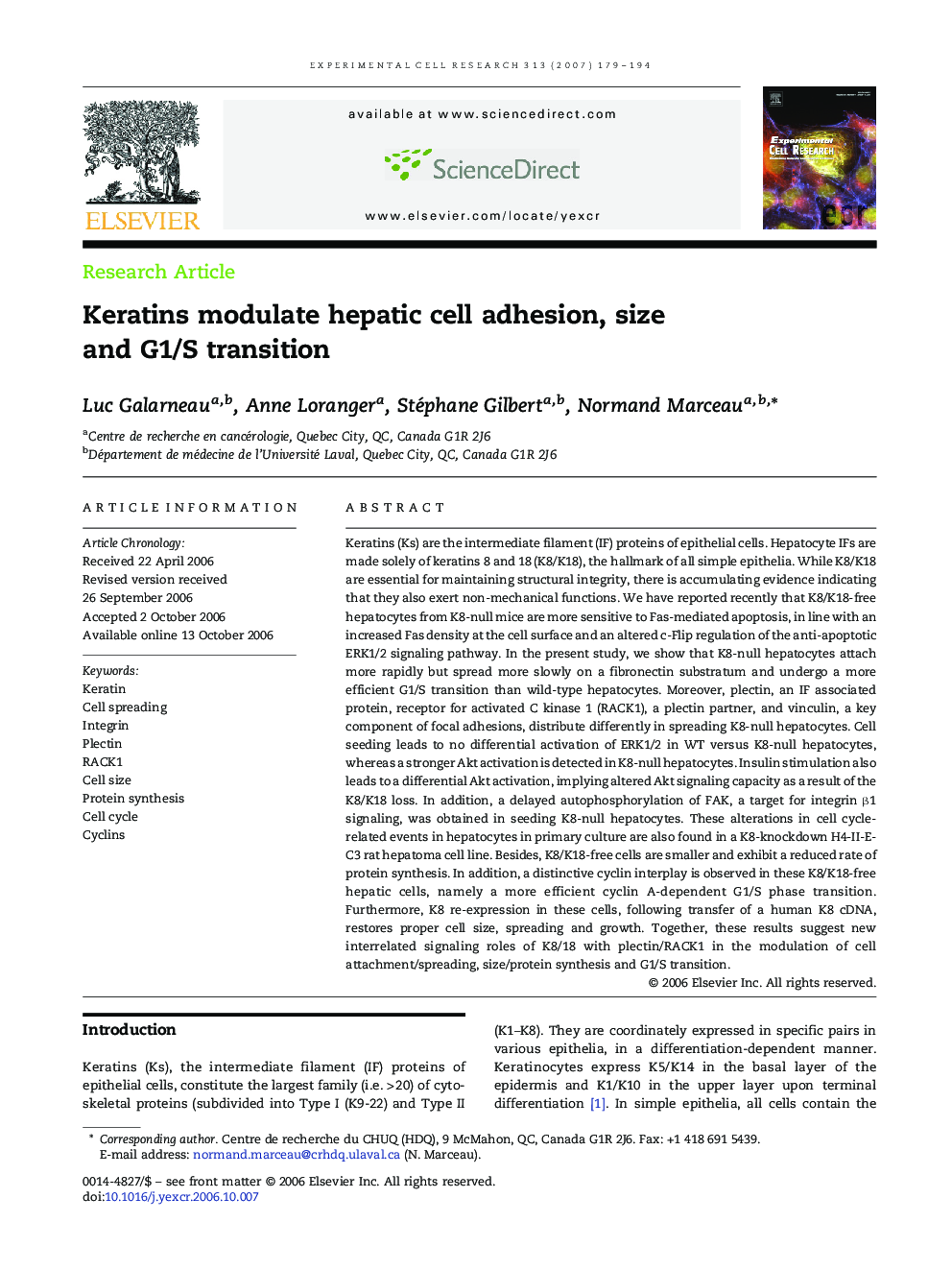| Article ID | Journal | Published Year | Pages | File Type |
|---|---|---|---|---|
| 2132827 | Experimental Cell Research | 2007 | 16 Pages |
Keratins (Ks) are the intermediate filament (IF) proteins of epithelial cells. Hepatocyte IFs are made solely of keratins 8 and 18 (K8/K18), the hallmark of all simple epithelia. While K8/K18 are essential for maintaining structural integrity, there is accumulating evidence indicating that they also exert non-mechanical functions. We have reported recently that K8/K18-free hepatocytes from K8-null mice are more sensitive to Fas-mediated apoptosis, in line with an increased Fas density at the cell surface and an altered c-Flip regulation of the anti-apoptotic ERK1/2 signaling pathway. In the present study, we show that K8-null hepatocytes attach more rapidly but spread more slowly on a fibronectin substratum and undergo a more efficient G1/S transition than wild-type hepatocytes. Moreover, plectin, an IF associated protein, receptor for activated C kinase 1 (RACK1), a plectin partner, and vinculin, a key component of focal adhesions, distribute differently in spreading K8-null hepatocytes. Cell seeding leads to no differential activation of ERK1/2 in WT versus K8-null hepatocytes, whereas a stronger Akt activation is detected in K8-null hepatocytes. Insulin stimulation also leads to a differential Akt activation, implying altered Akt signaling capacity as a result of the K8/K18 loss. In addition, a delayed autophosphorylation of FAK, a target for integrin β1 signaling, was obtained in seeding K8-null hepatocytes. These alterations in cell cycle-related events in hepatocytes in primary culture are also found in a K8-knockdown H4-II-E-C3 rat hepatoma cell line. Besides, K8/K18-free cells are smaller and exhibit a reduced rate of protein synthesis. In addition, a distinctive cyclin interplay is observed in these K8/K18-free hepatic cells, namely a more efficient cyclin A-dependent G1/S phase transition. Furthermore, K8 re-expression in these cells, following transfer of a human K8 cDNA, restores proper cell size, spreading and growth. Together, these results suggest new interrelated signaling roles of K8/18 with plectin/RACK1 in the modulation of cell attachment/spreading, size/protein synthesis and G1/S transition.
